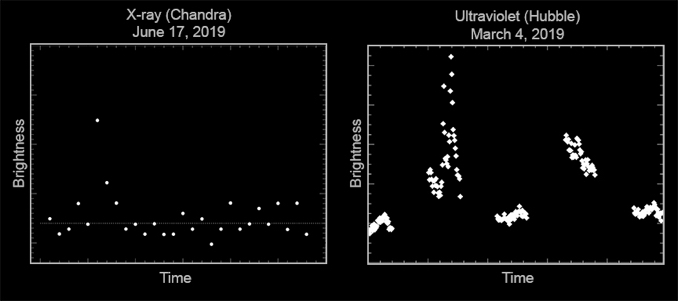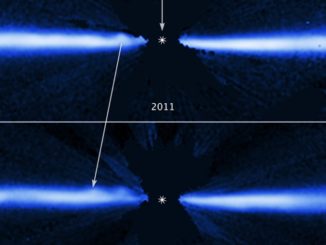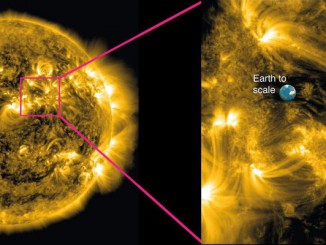
Small red dwarf stars, the most common in the Milky Way, may be more inhospitable than previously thought, thanks to periodic blasts of high-energy ultraviolet and X-ray emissions that could erode the atmospheres or otherwise roast any nearby planets, a new study concludes.
“It may turn out that most red dwarfs are hostile to life,” said Tommi Koskinen of the University of Arizona and co-author of a new analysis in The Astronomical Journal. “In that case the conclusion might be that planets around more massive stars, like our own Sun, might be the optimal location to search for inhabited worlds with the next generation of telescopes.”
Using NASA’s Chandra X-Ray Observatory and the Hubble Space Telescope, astronomers focused on Barnard’s Star, a 10-billion-year-old red dwarf with 16 percent the mass of the Sun about six light years from Earth. The star features one known planet, a hellish world about three times as massive as Earth that orbits at roughly the same distance as Mercury from the Sun.
The goal of the project was to get a better sense of how a mature red dwarf behaves compared to younger, very active family members.
Red dwarfs younger than a few billion years old are known to be strong sources of high-energy radiation that would scorch nearby planets, including those in a star’s habitable zone, making it difficult if not impossible for life, at least as it’s known on Earth, to gain a foothold. But less is known about the environments around older red dwarfs.

The new observations of Barnard’s Star show that about 25 percent of the time, the star unleashes powerful flares, the sort of outbursts that, if typical of all red dwarfs, would pose a threat to the atmospheres of close-orbiting planets.
“If these snapshots are representative of how active Barnard’s Star is, then it is pumping out a lot of harmful radiation,” said study co-author Girish Duvvuri of the University of Colorado. “This amount of activity is surprising for an old red dwarf.”
The researchers are now studying high-energy outbursts across a wider population to determine whether Barnard’s Star is typical of red dwarfs in general.



